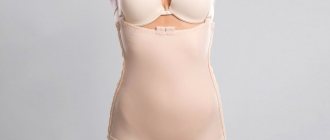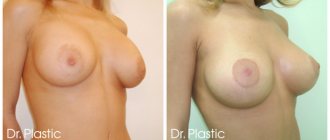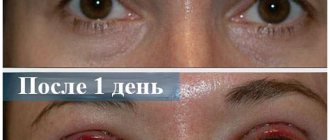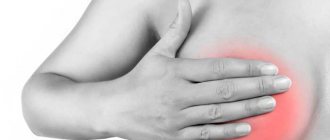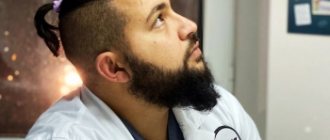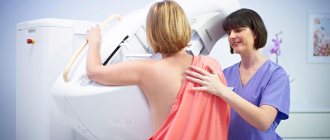About the surgeon Documents Work experience Life Style Awards Author's section
Chest and belly
— these aesthetic problems often oppress their owner at the same time. Being either a consequence of childbirth and breastfeeding, or the result of severe weight loss, they have no effective solution other than surgery.
Fortunately for modern women, it will not be difficult for an experienced plastic surgeon to bring a woman’s body into “fighting” shape. In addition, in most cases, both the chest and abdomen can be corrected in one operation, without stretching the period of transformation and recovery for many months.
You can plan surgery as early as 6 months after cessation of lactation. When planning plastic surgery, it is necessary to take into account that the patient’s weight must be stable. If you plan to lose 5-10 kg, then it is better to postpone the operation - that is, first we achieve the desired weight, and then we correct the imperfections of the figure with the help of plastic surgery. (Variations in weight of 2-3 kg are acceptable and do not affect the result of the operation.)
After the combined operation, the patient needs to stay in the clinic’s hospital for 3 days, and 2 weeks in Moscow (for non-residents). There is no need to remove the sutures; they dissolve on their own. 3 weeks after surgery, you can spend the whole day on your feet and go to work. The cost of the combined operation is summed up from the cost of breast surgery and the cost of abdominal surgery; you will also need to pay extra for 2 additional days of hospital stay at the clinic. The patient pays for preoperative tests independently (the clinic only accepts tests taken in the Russian Federation).
Why don't sports and diet always help to tighten your stomach?
Do not think that surgical tummy tuck (abdominoplasty) is only required for “lazy girls” who do not monitor their own weight and proper nutrition. This is not true at all. In most cases, aesthetic problems arise due to excessive stretching of the skin and separation of the muscles that support the internal organs. As a result, the effect of a protruding or “sagging” belly occurs, which cannot be corrected by any training or diet. In this case, only plastic surgery to restore the muscle corset and tighten the abdominal skin, which is called abdominoplasty, helps.
Breast reduction and tummy tuck
Unfortunately, breast reduction and abdominoplasty cannot be combined. Typically, breast reduction surgery is performed first and tummy tuck surgery is performed 6 months later.
Women often have high hopes for abdominal liposuction, but not for everyone this method is effective in solving the aesthetic problem of the appearance of the abdomen. In particular, major liposuction and breast reduction cannot be performed at the same time. At least 6 months must pass between these operations.
You can get a detailed consultation and choose an effective method of surgical correction of your figure by calling +7 (495) 517-80-60
. Consultation is free.
What will abdominoplasty give you?
As a result of abdominoplasty you will receive:
- beautiful flat stomach;
- slimmer waist;
- restore the natural muscle corset, which will reliably hold the internal organs in the correct position.
All photos “BEFORE” and “AFTER” abdominoplasty
Other problems can be solved during the operation:
- eliminate unwanted stretch marks or scars on the abdomen;
- correct the ugly shape of the navel;
- get rid of an umbilical hernia, etc.
Plastic surgeon Vadim Sergeevich Bakov is one of the best Russian specialists (dissertation in abdominal surgery), who can solve in Moscow the whole complex of complex problems associated with plastic surgery of the anterior abdominal wall and related problems in the least invasive way.
Bakov Vadim: breast lift and augmentation with full abdominoplasty
Contraindications to abdominoplasty
- planning pregnancy in the first year after surgery;
- diabetes;
- serious dysfunction of the thyroid gland;
- oncology;
- mental disorders
- disruption of the functioning of the hematopoietic organs;
- rheumatism, renal failure;
- hepatitis, HIV, AIDS;
- hypertension, severe cardiovascular diseases;
- obesity 3 and 4 degrees;
- connective tissue diseases;
- varicose veins of the lower extremities;
- psoriasis, fungal infections and purulent skin pathologies in the intervention area.
Abdominoplasty: techniques and procedure
A plastic surgeon always chooses a tummy tuck technique individually. Depending on the goals of the surgery and your initial condition, you may be offered a full abdominoplasty or a mini-surgery.
With a full abdominoplasty, excess skin and subcutaneous fat are removed. During the operation, the surgeon peels off and removes a fairly large flap of skin (from the waist line to the bikini line). The skin of the upper abdomen is peeled off, gently redistributed downwards and tightened. A small incision is made for the navel. Thus, the navel returns to its usual place just below waist level. As we have already said, during the operation, diastasis, hernia and all other individual problems in this area are eliminated.
Mini abdominoplasty, detailed description
Abdominoplasty is performed under general anesthesia and takes 2-3 hours (sometimes more).
If the patient does not have much excess skin on her abdomen, she will be offered a mini tummy tuck (mini abdominoplasty). This operation does not require the removal of significant amounts of excess skin, so mini abdominoplasty is performed without navel transfer.
Types of abdominoplasty
- A mini abdominoplasty is a limited tuck that only affects the lower abdomen and does not correct the position of the navel. It features a small incision and rapid healing of the intervention area.
- classic abdominoplasty without navel transfer is a simultaneous correction of the upper and lower abdomen, in which the removal of excess subcutaneous fat and stretched skin does not create the need to move the navel.
- classic abdominoplasty with navel transfer is an extensive operation to correct the upper and lower parts of the abdomen, involving tightening the muscles of the abdominal wall, removing subcutaneous fat and excess stretched skin. Due to the tension and “sliding” of the skin flap down, the navel is transferred to a new bed.
- abdominoplasty with suturing of diastasis - involves an incision in the lower abdomen, narrowing its “white line” and eliminating excess skin and fat. If necessary, a new position of the navel is formed.
- vertical abdominoplasty - involves a small vertical incision through which excess tissue is removed. In this case, the skin moves from the sides to the middle of the abdomen.
- navel plastic surgery (umbilicoplasty) is a correction that allows you to eliminate defects formed after abdominoplasty without moving the navel. The operation is also indicated after liposuction of the abdomen with subsequent skin tension or if it is necessary to eliminate the consequences of mechanical injuries.
After abdominoplasty
Already in the evening on the day of surgery, patients can get up and eat.
Discomfort and pain may occur during the first 2-3 days after surgery, so during this period we recommend remaining in the hospital under the supervision of qualified medical personnel. This will provide you with comfort, competent medical care and help avoid possible discomfort. After discharge from the hospital, you will no longer experience serious pain, and minor painful sensations can be relieved with the help of conventional analgesics (Ketarol, Ketonal, Xefocam).
Recovery period after body lift:
After the operation, the patient spends about a week in the clinic. At first, painkillers are prescribed in the form of injections or tablets to relieve pain. Wearing special supportive compression garments for about one and a half months. For 1.5-2 months, physical activity and heavy lifting should be limited; tension in the areas that have been corrected is not recommended. Sports activities are strongly not recommended until the wounds have completely healed; visiting a bathhouse, swimming pool, or sauna should also be avoided. Easy, short walks are recommended. Patients can usually return to work and their usual rhythm of life after 2 months with a gradual increase in loads and dynamic monitoring by a doctor. To prevent possible complications, strict adherence to the doctor’s recommendations is necessary.
Sutures after abdominoplasty
A thin, unnoticeable scar is an important priority of our work. The postoperative suture is located along the bikini line and will not be noticeable under underwear, but we do everything to ensure that it looks as aesthetically pleasing as possible and becomes completely invisible over time. When performing abdominoplasty, Dr. Bakov uses modern suture materials of the latest generation. Cosmetic intradermal sutures are applied, which do not require removal in the postoperative period.
For postoperative care of sutures, we use highly effective professional gels, creams and other preparations that help reduce the width of the scar, as well as a special silicone patch that provides ideal conditions for suture healing.
For a month after surgery, you must wear special compression garments. This allows you to reduce the load on the anterior abdominal wall and postoperative sutures, significantly reduces discomfort, creates conditions for the rapid healing of the postoperative wound and the formation of a thin, unnoticeable scar.
In the first weeks after surgery, the scar may look quite rough and wide, but gradually it will fade and become thinner. You can evaluate how satisfied you are with the seam only after 6 months, when it is finally fully formed. By this time, approximately 8 out of 10 of our patients say they are completely satisfied with the way their stitches look.
For those who have concerns about the appearance and quality of the scar, we may recommend laser resurfacing or a minor surgical procedure for scar correction (outpatient, under local anesthesia). These measures are always effective provided that enough time has passed after the operation and there is no longer intense postoperative tissue tension.
Abdominoplasty (tummy tuck)
The plastic surgery clinic offers a full range of services for correcting appearance and eliminating figure imperfections. Abdominoplasty, or tummy tuck, occupies one of the leading positions in popularity among women and men of all ages on this list. During this operation, the accumulated fatty tissue is removed, at the same time the stretched excess skin is excised, and the muscular aponeurotic frame is put in order so that the figure looks ideal after rehabilitation.
During the consultation, during a visual examination, the plastic surgeon determines how necessary abdominoplasty is. The specialist sees existing abnormalities in the shape of the anterior abdominal wall after pregnancy, sudden weight loss, or for other reasons. The optimal surgical technique is selected.
Goals of abdominoplasty
The main purpose of tummy tuck is the aesthetic correction of existing appearance defects. Shapes that have become swollen over the years, loss of definition, and ptosis spoil the figure, making it unattractive. For women, an ugly figure is a real tragedy that can cause many psychological problems. Abdominoplasty is an effective way to cope with existing aesthetic problems as quickly as possible.
Everyone determines the ideal parameters of a figure themselves, but there are generally accepted criteria.
- Dense, smooth surface of the abdomen and groin with clearly defined contours of the waist.
- The tissues of the center of the abdomen are elastic, elastic, slightly soft. Complete absence of wrinkles or sagging folds. A small graceful convexity below the navel, an elegant concavity above the navel.
There are several lines and landmarks that determine the correct shape of the figure. All parameters must strictly correspond to the norms of the correct interaction between elasticity, skin density, skeletal frame, and the muscular aponeurotic system.
- The location of the white line is clearly in the center, without deviations from the vertical line to the right or left and without strong curvatures. A clear, evenly running groove between the rectus abdominis muscles indicates an ideal figure shape.
- The semilunar lines on both sides of the rectus muscles clearly define the edges of the muscle group.
- A clear projection of the connecting bridge in each part of the course of the rectus muscle.
Upon examination, all of the listed lines demonstrate slight recesses along the contours of the muscle groups. Below the costal arches, on the anterior superior iliac spine and pubic symphysis, there are small protuberances. All lines are clearly defined, creating an overall picture of a beautiful figure.
First consultation
During examination, the plastic surgeon notes how pronounced and localized the existing deviations are. By talking with the patient, the specialist develops a surgical technique that can achieve an optimal result. A special program allows you to model new body parameters after tummy tuck. This will show the patient how realistic his wishes are when contacting the plastic surgery center.
Among the main conditions influencing the choice of abdominoplasty method, the following should be noted:
- patient's age;
- the presence of concomitant pathologies;
- how fatty tissue is distributed throughout the body;
- stability, initial BMI position;
- density, elasticity, thickness of the skin;
- presence, type of ptosis;
- how disordered the muscular-aponeurotic system is;
- are there any hernial protrusions, if so, at what stage;
- how many and what kind of scars are there on the walls of the abdomen.
Patients who come to correct their figure after massive, rapid weight loss often demonstrate a complete loss of the generally accepted proportions that define a beautiful figure. The specialist evaluates the appearance, condition of the lateral surface of the anterior abdominal wall, as well as how the shape and size of the abdomen relates to the front and side of the thighs, buttocks, and pubis.
To make a final decision, the doctor must know exactly when the weight loss occurred. During bariatric surgery, a sharp decrease in weight stabilizes after about a year to a year and a half. Aesthetic operations to transform the figure can be carried out after the plateau of the selected mass has lasted more than three months.
There are several conditions that determine the possibility of abdominoplasty.
- The patient needs to achieve optimal nutritional and metabolic balance.
- The patient should be as close as possible to the ideal weight parameters to avoid possible complications during rehabilitation.
- Aesthetic perfection can be achieved if the patient’s weight is completely stabilized and within the generally accepted criteria.
By prescribing surgery ahead of time, before the final restoration of optimal weight, there is a high probability that the patient will have to repeat the procedure again after a short period of time. Further weight loss will lead to the formation of new folds, wrinkles, and the appearance of sagging. Skin properties will change dramatically with massive weight loss. Good professional training and extensive practical experience are required for the surgeon to accurately determine the time when tummy tuck will give the desired result, reducing the risk of complications to a minimum.
Important!
If the skin-fat apron is large, formed due to a sharp loss of weight, you need to wear a special bandage for 1-2 months while preparing for plastic surgery. This will prevent compartment syndrome from developing during the postoperative recovery period.
Types of aesthetic deformation requiring a tummy tuck
- Postpartum deformity. It manifests itself as significant fat deposition, accompanied by a decrease in the tone of the anterior abdominal wall.
- Varying degrees of obesity, in which folds of skin and fat form in the form of an apron covering the perineum.
- Age change. Decreased muscle tone, flabby, wrinkled skin of the abdomen. Excess body fat.
- Defect of the anterior abdominal wall, congenital or acquired. Consequences of hernia development. Multiple scars after injury or surgery.
After bariatric surgery, severe deformation of the contour of the anterior abdominal wall often occurs, caused by sudden weight loss. The doctor, based on objective data obtained after a visual examination and a collected medical history, selects the optimal algorithm for surgical intervention to quickly eliminate the consequences.
Standard abdominoplasty
Patients after massive weight loss undergo advanced abdominoplasty techniques to restore the aesthetics of their body shape. During abdominal plastic surgery, the surgeon completely eliminates all existing deficiencies.
It is used to get rid of excess subcutaneous tissue, eliminate stretch marks, changes caused by diastasis, and completely restore the normal functioning of the muscular frame of the anterior abdominal wall. Since the surgery does not require work on surrounding areas, the loss of total body weight is negligible.
Extended abdominoplasty
A complex operation involving the anterior and lateral areas of the thighs, and the lateral parts of the abdomen. The length of the postoperative scar is moderate. With extended abdominoplasty, all the techniques of classical abdominoplasty are used, except for long transverse incisions that go no further than the anterior axillary lines.
Lower body lift
The most effective, common way to completely eliminate the consequences of a sharp decrease in body weight after bariatric surgery. Vertical and horizontal fastening of the muscular frame of the anterior abdominal wall is performed. Diastasis of the rectus abdominis muscles is eliminated. A complete, joint correction of ptosis, the gluteal region, the anterior and lateral surfaces of the thighs, and the pubis is performed. Using a circular incision from the pubic symphysis, passing along the level of the anterior iliac spine and further behind the upper edge of the buttocks, a lift is made and excess skin is excised. An individual plastic surgery technique is developed for each patient, since correction may require significant excision of skin flaps.
Abdominal liposuction
It is used as an addition to tummy tuck if there are large reserves of subcutaneous tissue.
Special cannulas are inserted through miniature incisions for vacuum suction of fat. The local procedure allows you to remove only small fat traps to correct the contours of the figure.
Plastic surgeons rarely use one technique for tummy tuck. The combination of various methods of body contour correction allows you to achieve the most effective results. This operation requires a lot of experience and good practice. It will take at least a year for complete recovery. Only then can you fully see how much the contours of the body have changed. Strict adherence to the instructions of the attending physician will ensure the absence of complications.
Will abdominoplasty help me?
If you are planning a surgical tummy tuck and want to find out about the possibilities, parameters and price of such an operation, sign up for a free consultation with plastic surgeon Vadim Sergeevich Bakov. Advice from an experienced specialist will help you determine how to best solve the problem that concerns you.
Helpful information
- information for patients: list of tests;
- information about the plastic surgeon;
- how to remove belly fat – section of our website about liposuction.
Prices for abdominoplasty in Moscow
Abdominoplasty
| Full abdominoplasty with navel relocation and correction of diastasis recti | 315 000 |


